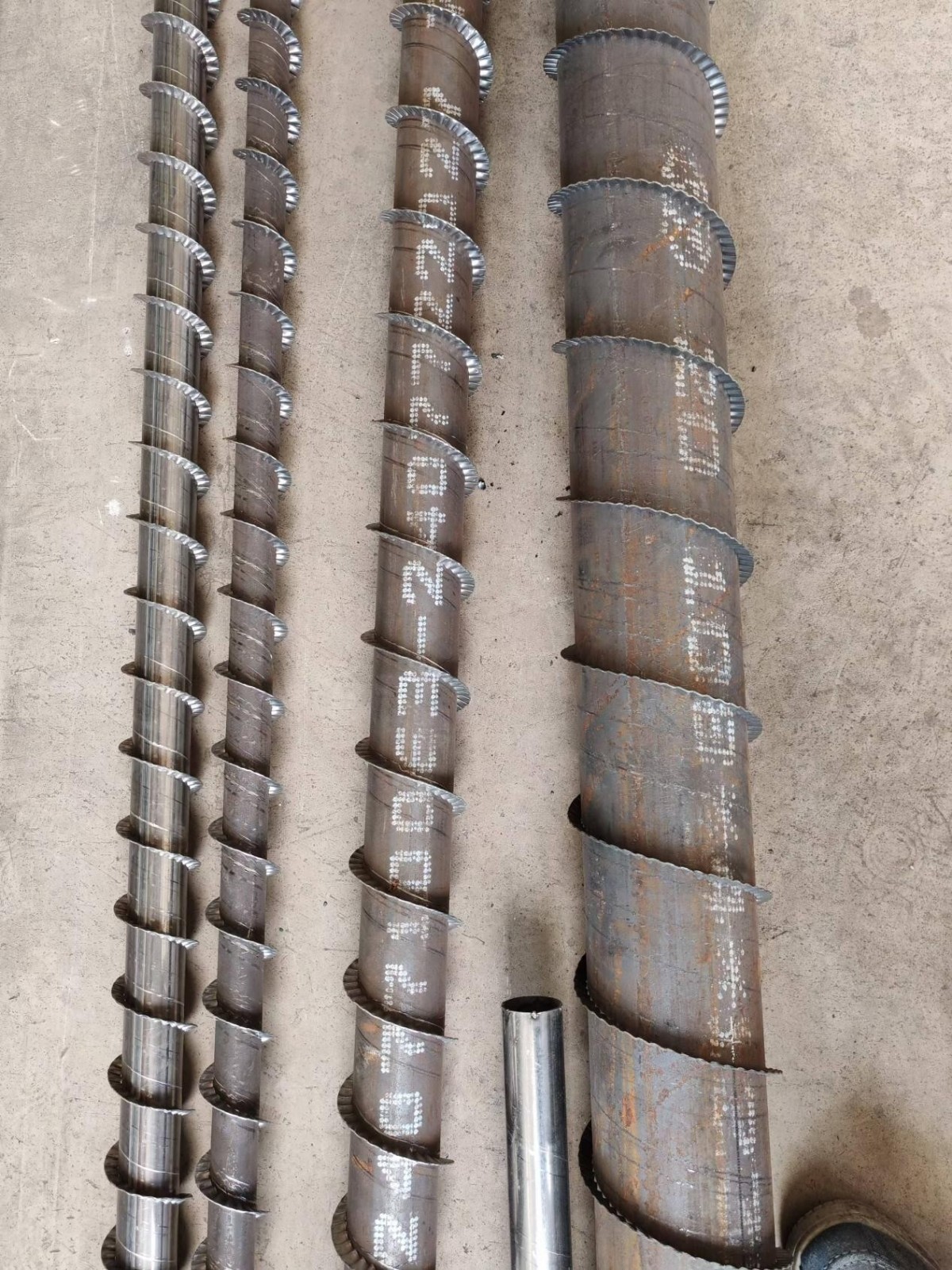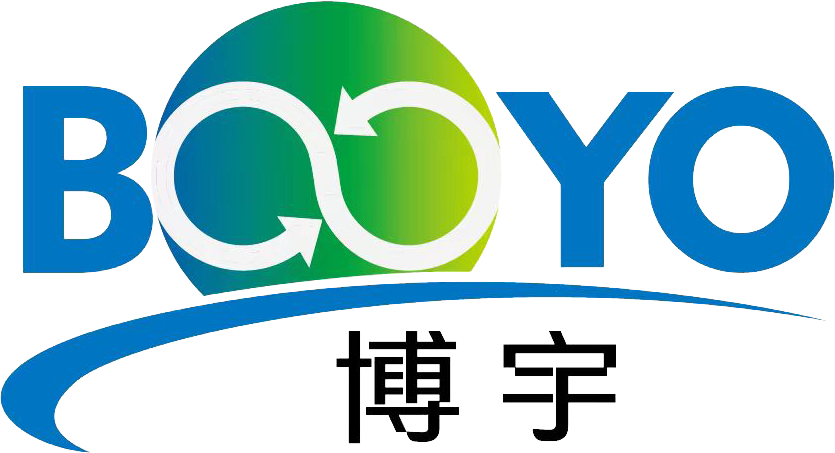
Our News
Find out about our latest news here.
Latest News
- ▶ Large-Scale Spiral Plate Heat Exchanger – 450㎡ Heat Exchange Area, 4m Diameter High-Efficiency Heat Transfer Solution
- ▶ Rich Oil Heater (Oil Rich in Aromatic Hydrocarbons)
- ▶ Power Plant Boiler Heat Recovery System Price Overview
- ▶ The Relationship Between U-Tube and Shell-and-Tube Heat Exchangers
- ▶ U-Tube Heat Exchanger: An Efficient Heat Transfer Solution
- ▶ Differences Between Vertical and Horizontal Spiral Plate Recommended Guide 1
Message
How Does a Coaxial Heat Exchanger Work?
A coaxial heat exchanger consists of multiple coaxial units, each comprising five layers of coaxial heat exchange tubes. These layers create five axial spiral flow channels of equal diameter. The hot and cold fluids travel through alternating channels, ensuring efficient heat exchange without direct contact. The key elements of this design include:
Turbulent Flow Enhancement: The spiral flow pattern increases turbulence, eliminating stagnant layers and enhancing heat transfer efficiency.
Axial Spiral Flow Channels: These channels ensure that the fluid continuously impacts the heat exchange surface, maintaining a high rate of thermal conductivity.
Metallic Heat Transfer Walls: Each layer of tubing serves as a heat transfer surface, maximizing efficiency by allowing heat conduction across multiple barriers.
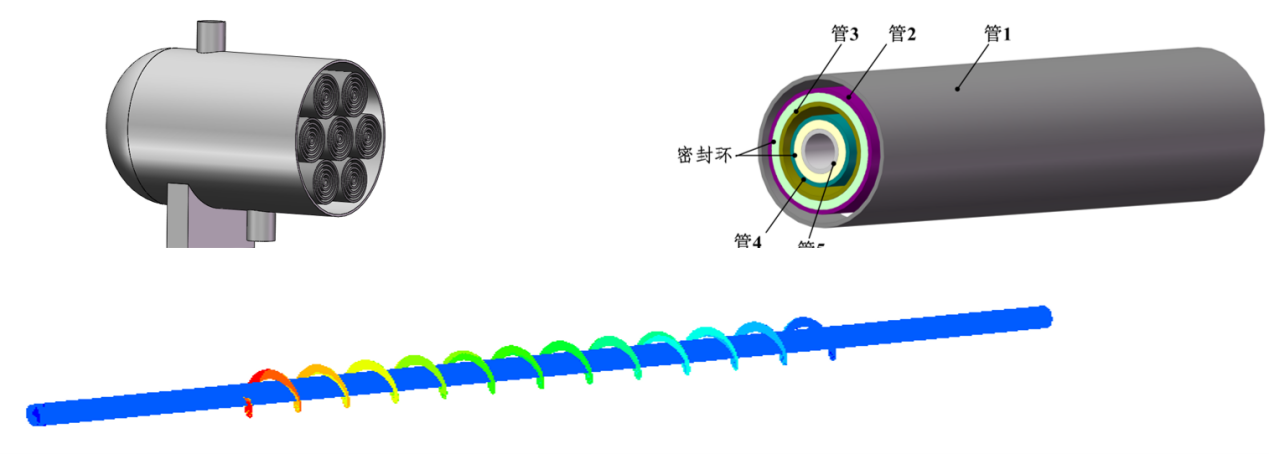
Coaxial Heat Exchanger vs. Traditional Heat Exchangers
From the table, it is evident that coaxial heat exchangers outperform traditional models in efficiency, pressure resistance, scaling prevention, and durability, particularly in high-temperature and high-pressure environments.
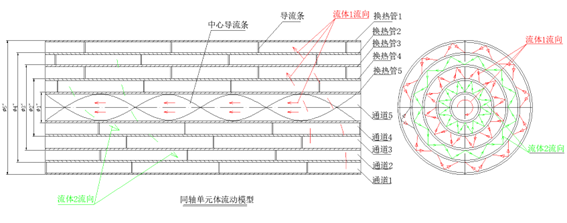
Key Advantages of Coaxial Heat Exchangers
Superior Heat Exchange Efficiency:
The axial spiral flow pattern ensures that all fluid layers participate in heat transfer.
Compared to shell-and-tube heat exchangers, coaxial heat exchangers deliver 2-3× higher efficiency.
Exceptional Pressure Resistance:
The outermost tube provides structural reinforcement, allowing the unit to withstand higher pressures than spiral plate heat exchangers, which weaken as their diameter increases.
Self-Cleaning Function to Prevent Fouling:
Turbulent flow prevents impurities from settling on heat exchange surfaces, extending operational life.
Unlike plate heat exchangers, which clog easily, coaxial designs maintain consistent performance over time.
Compact Structure with Cost-Effective Installation:
No need for thick tube sheets and flanges, reducing material and assembly costs.
Modular design allows for easy scaling by adjusting unit quantity instead of increasing diameter.
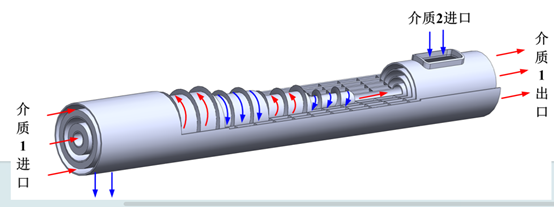
Applications and Industry Use Cases
Thanks to its superior efficiency and resistance to fouling, the coaxial heat exchanger is widely used in industries such as:
Chemical Industry: Ideal for handling high-temperature gases, corrosive fluids, and pressurized systems.
Energy Sector: Enhances waste heat recovery and energy efficiency, reducing overall operational costs.
Food Processing: Ensures precise temperature control for heat-sensitive liquids.
HVAC (Heating, Ventilation, and Air Conditioning): Provides energy-efficient heating and cooling circulation with minimal maintenance.

How to Choose the Right Heat Exchanger?
To select the optimal heat exchanger, consider the following factors:
Fluid Characteristics: If fluids contain suspended particles, choose a design with self-cleaning capabilities.
Pressure Requirements: Applications with high-pressure conditions require reinforced structures like the coaxial heat exchanger.
Heat Transfer Efficiency: If maximizing efficiency is the top priority, plate heat exchangers may be an option—but they require very clean fluids.
Maintenance Considerations: For minimal downtime and long-term savings, coaxial heat exchangers offer the best balance of efficiency, durability, and maintenance ease.
Conclusion: Why Choose a Coaxial Heat Exchanger?
With its high heat exchange efficiency, superior pressure resistance, and self-cleaning capabilities, the coaxial heat exchanger stands out in industrial heat exchange applications. Compared to traditional heat exchangers, it:
Boosts energy utilization by achieving up to 3× higher heat transfer efficiency than shell-and-tube exchangers.
Reduces maintenance costs by preventing scaling and fouling.
Handles high-pressure conditions more effectively than spiral plate heat exchangers.
Provides long-term operational reliability with minimal performance degradation.
For businesses seeking a cost-effective, high-performance heat exchange solution, the coaxial heat exchanger is the ultimate choice!
PROFESSIONAL CONSULTATION
If you are interested in our products and want to know more details, please leave a message here, we will reply you as soon as we can.
